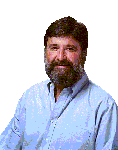You have a great idea. Is patenting the best way to protect it? How much do patents cost? How do you find out if your idea is patentable?

Registered Patent Agent
WebPatent.com
|
You have a great idea. Is patenting the best way to protect it? How much do patents cost? How do you find out if your idea is patentable?
|
|

|
Robert M. Hunter, Ph.D.
Registered Patent Agent WebPatent.com |
| Home | Qualifications | Contact Info | Site Map | Other Links |
Access Control
People. Employee and subcontractor inventors should agree to disclose information about their inventions to technology managers. Federal regulations require that the employees of nonprofit organizations and small business firms (at every contracting tier) sign written agreements to that effect (37 CFR 401.14(f)(2)). Everyone involved in disclosing, evaluating and managing such information should agree not to disclose it to any unauthorized person. Such information should be shared only on a "need to know" basis.
Offices. Offices and other spaces in which information on inventions is stored should be locked when not occupied by and under the control of people authorized to have access to the information.
Documents. Hard copies of documents containing information on inventions should be kept in filing cabinets or desk drawers that are locked when not under the control of people authorized to have access to the information. Obsolete copies of such documents should be shredded or otherwise destroyed.
Computers. Computers in which files containing information on inventions are stored should be turned off and locked or be placed or installed in a secure space when not in use by people authorized to have access to the information. Information stored in computers or accessible through networks should be protected with software security.
Administration. Computers and networks should be configured so that only the system administrator can add or remove technology manager users, install software packages, perform tape backups, monitor user and system process activity and configure and control computer and network access. Technology managers should control access to invention information (grant or deny access to any inventor at any time) on a technology group level and on an invention level.
Usernames and Passwords. Computer systems should require that each user input his/her username and password to view and edit the invention information to which he/she has been granted access privileges. Passwords should be changed by the user periodically (usually every three to six months). Rules to be followed in selecting passwords are as follows:
- Do not use your username in any form (as-is, reversed, capitalized, doubled, etcetera).
- Do not use your first, middle or last name in any form.
- Do not use the name of your spouse or child.
- Do not use other information about you that can be easily obtained, e.g., license plate numbers, telephone numbers, social security numbers, automobile make, street name, etcetera.
- Do not use all digits or all the same letter.
- Do not use a word contained in dictionaries, spelling lists or other word lists.
- Do not use less than six characters.
- Do use mixed-case alphabetic characters.
- Do include non-alphabetic characters (digits or punctuation).
- Do use a password that is easy to remember and do not write it down.
- Do use a password that you can input quickly without having to look at the keyboard.
The following methods can be used to select a new password:
- Choose a line or two from a song or poem and use the first letter of each word.
- Select seven or eight characters, alternating between a consonant and one or two vowels to produce a nonsense word that you can pronounce (and, thus, remember).
- Choose two short words and concatenate them together with a punctuation character between them.
Encryption. Preferably, data stored in databases and data transmissions over networks should be encrypted. Physical security measures must be adequate to protect these files.
Milestone Tracking
Selecting and Working with a Patent Professional
Assisting in Patent Prosecution
Reporting
© 1998-2003 Robert M. Hunter PLLC